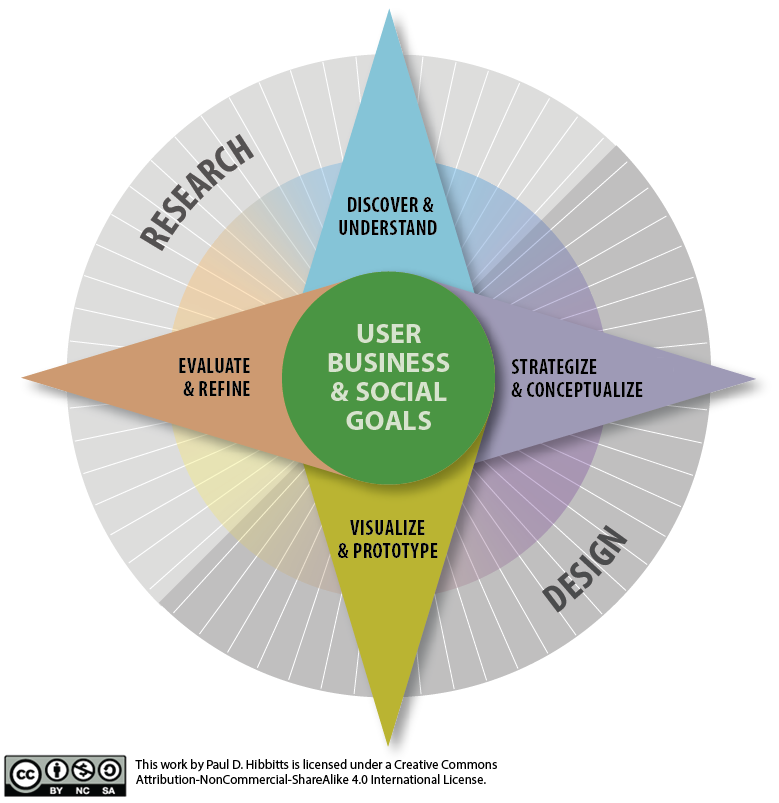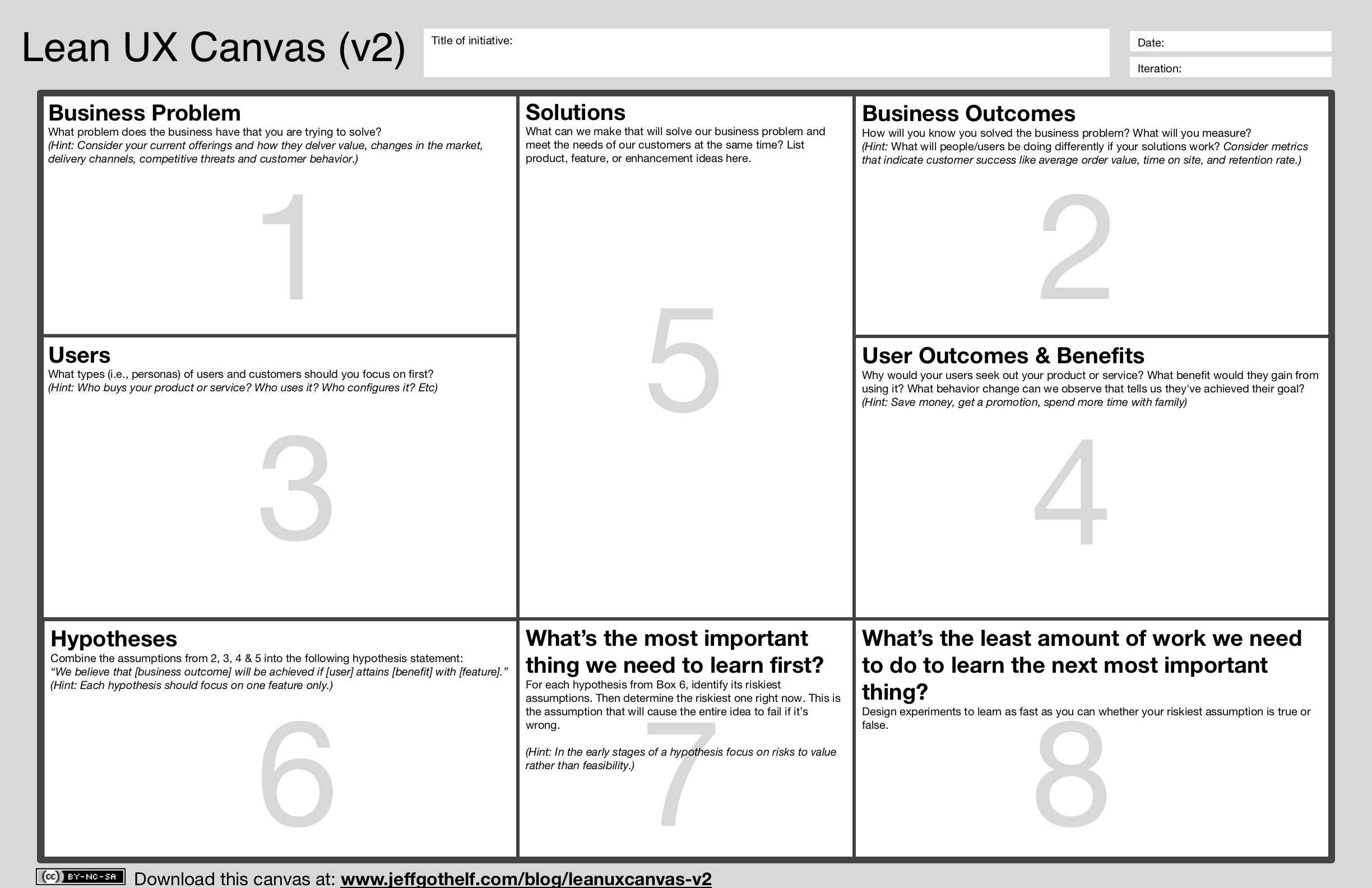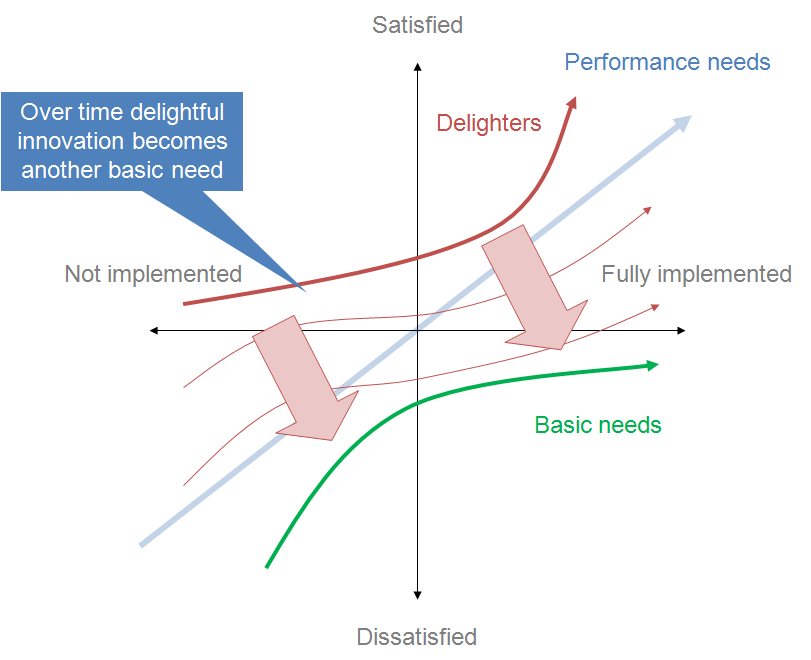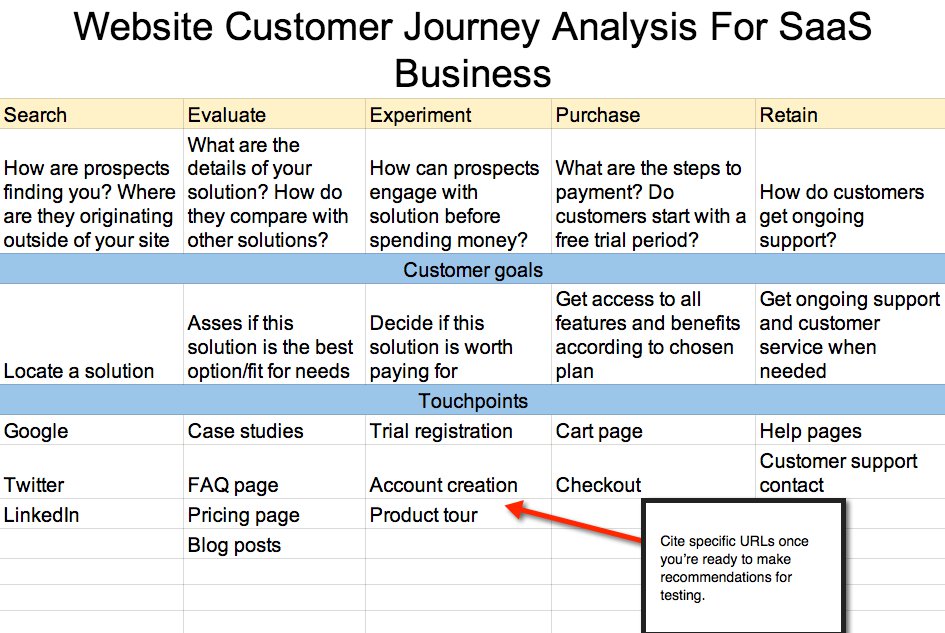[.text: alignment(center)]
UX Strategy
CMPT 363
“The idea is to focus development not only on the UX, but what the UX enables, and—most crucially—what we want to happen after the UX.”
— Kathy Sierra
[.background-color: #618B25]
What is the practice of strategic interaction design?
[.background-color: #FFFFFF]

Think "Types of Activities" vs. "Phases/Steps" for our UX Toolkit
[.background-color: #FFFFFF]

[.background-color: #618B25]
Topics to Explore
- User Experience Strategy
- Assessing Current State
- Imagining Future State
[.background-color: #611036]
How to make more strategic design decisions?
User Experience Strategy
A UX Strategy is the plan for the user experience you want to deliver
[.background-color: #FFFFFF]

What is the difference between tactics and strategy?
Tactics vs. Strategy
Tactic
- Shorter term
- To meet a specific product/project need
- Sub-set of available resources
- The ‘How’, in the form of a plan
Tactics vs. Strategy
Strategy
- Longer term
- To meet broad organizational needs
- Full set of available resources
- The ‘What’, in the form of a system
What are core strategy questions?
[.build-lists: true]
What are core strategy questions? (by Joe Natoli)
- What is worth doing?
- What are we creating?
- What value does it deliver? (end-user needs and organizational objectives)




Problem Statement
A brief description of the issue that needs to be solved by a project or group
Sample Problem Statement Format, by Jeff Gothelf
{Our service/product} was designed to achieve {goals}. We have observed that the service/product isn’t meeting {these goals}, which is causing {this adverse effect} to our business. How might we improve {service/product} so that our customers are more successful based on [these measurable criteria]?
Preferred Problem Statement Format ('User Need Statement' from Nielsen Norman Group)
{A user} needs {need} in order to accomplish {goal}.
Example
For example, Alieda, a multitasking, tech-savvy mother of 2 needs to quickly and confidently compare options without leaving her comfort zone in order to spend more time doing the things that really matter.
[.build-lists: true]
A Good Problem Statement is:
- Human-centered
- Has one objective
- Provides creative latitude
- Manageable in scope
- Not a solution itself
A Good Problem Statement is:
- Human-centered
- Has one objective
- Provides creative latitude
- Manageable in scope
- Not a solution itself
... but what about ethical considerations?
[.background-color: #FFFFFF]

Methods Helpful in Defining Problem Statements
- Observation
- Exploring PoV (Points of View)
- Asking Why?
A Caveat about Asking “Why”
A Caveat about Asking “Why”
Asking someone “Why” they do something can make them feel defensive, so sometimes alternative phrasing is better such as asking something like “What was your intention in doing that?”
[.background-color: #2d6e92] [class=activity-link-color]
Activity: Problem Statement
THINK-PAIR-SHARE
Draft an example problem statement regarding the SFU Library, where the stakeholder is “students”
{Stakeholder} needs a way to {need} because {insight}.
A good problem statement is:
✓ Human-centered
✓ Has one objective
✓ Provides creative latitude
✓ Manageable in scope
✓ Not a solution itself
Value Proposition (often called unique value proposition)
A brief statement that captures why a consumer would buy or use a product/service.
Preferred Value Proposition Format (source: Steve Blank)
We help {X} do {Y} doing {Z}
For example: The Grav Open Course Hub project helps tech-savvy instructors to reach unmet pedagogical and student experience goals by partnering a modern open platform with their current LMS.
[.build-lists: true]
A Good Value Proposition is:
- States target audience
- Highlights the benefit
- Includes the solution
- Element(s) of uniqueness
- Is up to date
What about open source software?
“You don’t make money with open-source, you make money because of open-source.”
– Doc Searls
[.background-color: #611036]
How to make more strategic design decisions?
Assessing Current State
Assessing Current State
- Kano Model
- Journey Maps
Kano Model
Developed by Professor Noriaki Kano in the 1980s, the Kano Model can help predict customer satisfaction

Kano Question Pair
Functional Form
“How do you feel if you had this feature?”
Dysfunctional Form
“How do you feel if you did not have this feature?”
- I like it
- I expect it
- I am neutral
- I can tolerate it
- I dislike it

Journey Maps
A timeline-based view of a user’s experience, which can be represented in varying levels of detail
Why Use Journey Maps?
- To visualize the entire experience
- To help build empathy
- To identify areas for improvement
- To create alignment among multiple stakeholders/teams
- To make better design decisions
[.background-color: #FFFFFF]


[.build-lists: true]
Key Aspects of Journey Maps
- Represents one viewpoint
- Communicates the user’s perceptions
- Based on actual user research
- Contains “moments of truth”
- Must be actionable (i.e. help inform design decisions)
Common Elements
- Phases of journey
- Goals or needs (1 or more per phase)
- Touchpoints (1 or more per phase)
- Actions (1 or more per phase)
- Emotions and thoughts (1 or more per phase)
- Ideas for improvements (1 or more per phase)

[.background-color: #2d6e92] [class=activity-link-color]
Activity: Simple Journey Map
GROUPS OF 2-3
Create a text-only journey map for a user searching for a book (required by a course) on the SFU Library website, checking that book out and returning it
✓ Phases of journey
✓ Goals or needs (1 or more per phase)
✓ Touchpoints (1 or more per phase)
✓ Actions (1 or more per phase)
✓ Emotions and thoughts (1 or more per phase)
✓ Ideas for improvements (1 or more per phase)
[.background-color: #611036]
How to make more strategic design decisions?
Imagining Future State
Imagining Future State
- User Stories
- Product Design Principles
Harnessing User Stories
What is a User Story?
At its core, a user story is a collaborative design tool that helps teams better view their product from the perspective of those who will actually use it.
(Agile) User Story Structure
As a role,
I want to goal/desire
so that benefit
User Stories for Agile
When used within an Agile approach, story size is often dictated by sprint length
Example Agile User Stories
As a Central Canadian Bank customer,
I want to register for an online account
so that I can pay my bills online.
As a Central Canadian Bank customer,
I want to log into my online account
so that I can pay my bills online.
As a Central Canadian Bank customer,
I want to manage the details of my account
so that I can pay my bills online.
User Stories for Requirements
- Includes reaching the user’s goal
- User plays a central role
- No interface assumptions are stated
- Can be linked to usage importance and frequency
- Can be initially fairly broad in nature (esp. for strategic usage)
Example High-level User Stories
As a Central Canadian Bank customer,
I want to withdrawal funds from an ATM
so that I have the cash I need on hand.
As a Central Canadian Bank customer,
I want to transfer funds from one account to another
so that I have the funds to cover a large cheque.
[.background-color: #2d6e92] [class=activity-link-color]
Activity: High-level User Story
THINK-PAIR-SHARE
What might be a high-level user story for SFU’s Library website?
As a role,
I want to goal/desire
so that benefit
✓ Includes reaching the user’s goal
✓ User plays a central role
✓ No interface assumptions are stated
✓ Can be linked to usage importance and frequency
✓ Can be initially fairly broad in nature (esp. for strategic usage)
Product Design Principles
Unlike generic design principles (i.e. ‘easy to use’), product design principles are a set of design principles specific to a particular product or service
Windows UX Design Principles
- Reduce concepts to increase confidence
- Small things matter, good and bad
- Be great at “look” and “do”
- Solve distractions, not discoverability
- UX before knobs and questions
- Personalization, not customization
- Value the life cycle of the experience
- Time matters, so build for people on the go
HTC Sense’s Design Principles:
- Make it Mine: personalization needs to reach a level never before possible.
- Stay Close: staying in touch with the people in your life means managing a variety of communication channels and applications.
- Discover the Unexpected: many of the most memorable moments in your life are experienced, not explained
[.build-lists: true]
Defining Product Design Principles
- Based on user research/knowledge
- More specific, less generic
- Easily memorized/internalized
- Encompassing broad aspects of the product
- Shared/distributed far beyond UX team
[.background-color: #618B25]
Summary
- User Experience Strategy
- Assessing Current State
- Imagining Future State
[.background-color: #888888]
References and Suggested Books
- Kano Model, Wikipedia (https://en.wikipedia.org/wiki/Kano_model)
- Mapping Experiences: A Complete Guide to Creating Value through Journeys, Blueprints, and Diagrams by James Kalbach
- Running Lean, by Ash Maurya
- The Complete Guide to the Kano Model (https://foldingburritos.com/kano-model/)
- Think First: My No-Nonsense Approach to Creating Successful Products, Memorable User Experiences + Very Happy Customers by Joe Natoli
- User Experience Mapping: Enhance UX with User Story Map, Journey Map and Diagrams by Peter W. Szabo
- User Need Statements: The ‘Define’ Stage in Design Thinking (https://www.nngroup.com/articles/user-need-statements/)
[.background-color: #888888]
Image Credits (for images without source URL or note)
https://leadflowmethod.com/message/introduction-lean-canvas/
http://www.forbes.com/sites/anthonykosner/2013/11/23/how-design-and-user-experience-translates-to-the-bottom-line/
https://jeffgothelf.com/blog/leanuxcanvas-v2/
https://uxdesign.cc/designing-ethically-pt-2-535ac61e2992
https://webservices.ufhealth.org/2018/06/01/is-an-apple-fritter-the-best-user-experience-in-the-world/
https://www.cmswire.com/cms/customer-experience/journey-mapping-helps-organize-around-your-customers-020795.php
https://medium.com/toptal-publications/customer-journey-maps-what-they-are-and-how-to-build-one-616a83e39469
https://conversionxl.com/blog/customer-journey-mapping-examples/ 